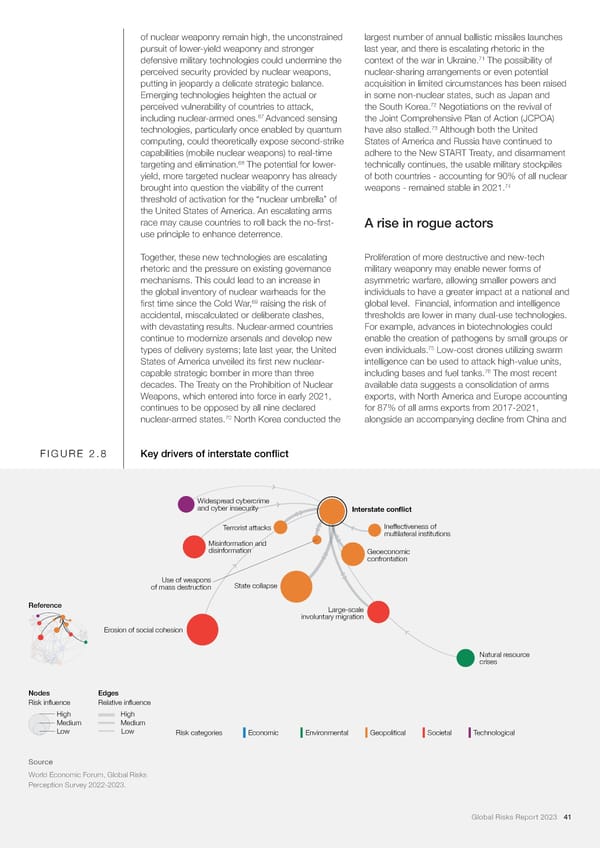of nuclear weaponry remain high, the unconstrained largest number of annual ballistic missiles launches pursuit of lower-yield weaponry and stronger last year, and there is escalating rhetoric in the 71 defensive military technologies could undermine the context of the war in Ukraine. The possibility of perceived security provided by nuclear weapons, nuclear-sharing arrangements or even potential putting in jeopardy a delicate strategic balance. acquisition in limited circumstances has been raised Emerging technologies heighten the actual or in some non-nuclear states, such as Japan and 72 perceived vulnerability of countries to attack, the South Korea. Negotiations on the revival of 67 including nuclear-armed ones. Advanced sensing the Joint Comprehensive Plan of Action (JCPOA) 73 technologies, particularly once enabled by quantum have also stalled. Although both the United computing, could theoretically expose second-strike States of America and Russia have continued to capabilities (mobile nuclear weapons) to real-time adhere to the New START Treaty, and disarmament 68 targeting and elimination. The potential for lower- technically continues, the usable military stockpiles yield, more targeted nuclear weaponry has already of both countries - accounting for 90% of all nuclear brought into question the viability of the current weapons - remained stable in 2021.74 threshold of activation for the “nuclear umbrella” of the United States of America. An escalating arms race may cause countries to roll back the no-昀椀rst- A rise in rogue actors use principle to enhance deterrence. Together, these new technologies are escalating Proliferation of more destructive and new-tech rhetoric and the pressure on existing governance military weaponry may enable newer forms of mechanisms. This could lead to an increase in asymmetric warfare, allowing smaller powers and the global inventory of nuclear warheads for the individuals to have a greater impact at a national and 昀椀rst time since the Cold War,69 raising the risk of global level. Financial, information and intelligence accidental, miscalculated or deliberate clashes, thresholds are lower in many dual-use technologies. with devastating results. Nuclear-armed countries For example, advances in biotechnologies could continue to modernize arsenals and develop new enable the creation of pathogens by small groups or types of delivery systems; late last year, the United even individuals.75 Low-cost drones utilizing swarm States of America unveiled its 昀椀rst new nuclear- intelligence can be used to attack high-value units, 76 capable strategic bomber in more than three including bases and fuel tanks. The most recent decades. The Treaty on the Prohibition of Nuclear available data suggests a consolidation of arms Weapons, which entered into force in early 2021, exports, with North America and Europe accounting continues to be opposed by all nine declared for 87% of all arms exports from 2017-2021, 70 nuclear-armed states. North Korea conducted the alongside an accompanying decline from China and FIGURE 2.8 Key drivers of interstate conflict Widespread cybercrime and cyber insecurity Interstate conflict Terrorist attacks Ineffectiveness of multilateral institutions Misinformation and disinformation Geoeconomic confrontation Use of weapons State collapse of mass destruction Reference Large-scale involuntary migration Erosion of social cohesion Natural resource crises Nodes EdgesEdges Risk influence Relative influence High High Medium Medium Low Low Risk categories Economic Environmental Geopolitical Societal Technological Source World Economic Forum, Global Risks Perception Survey 2022-2023. Global Risks Report 2023 41
 2023 | Global Risks Report Page 40 Page 42
2023 | Global Risks Report Page 40 Page 42